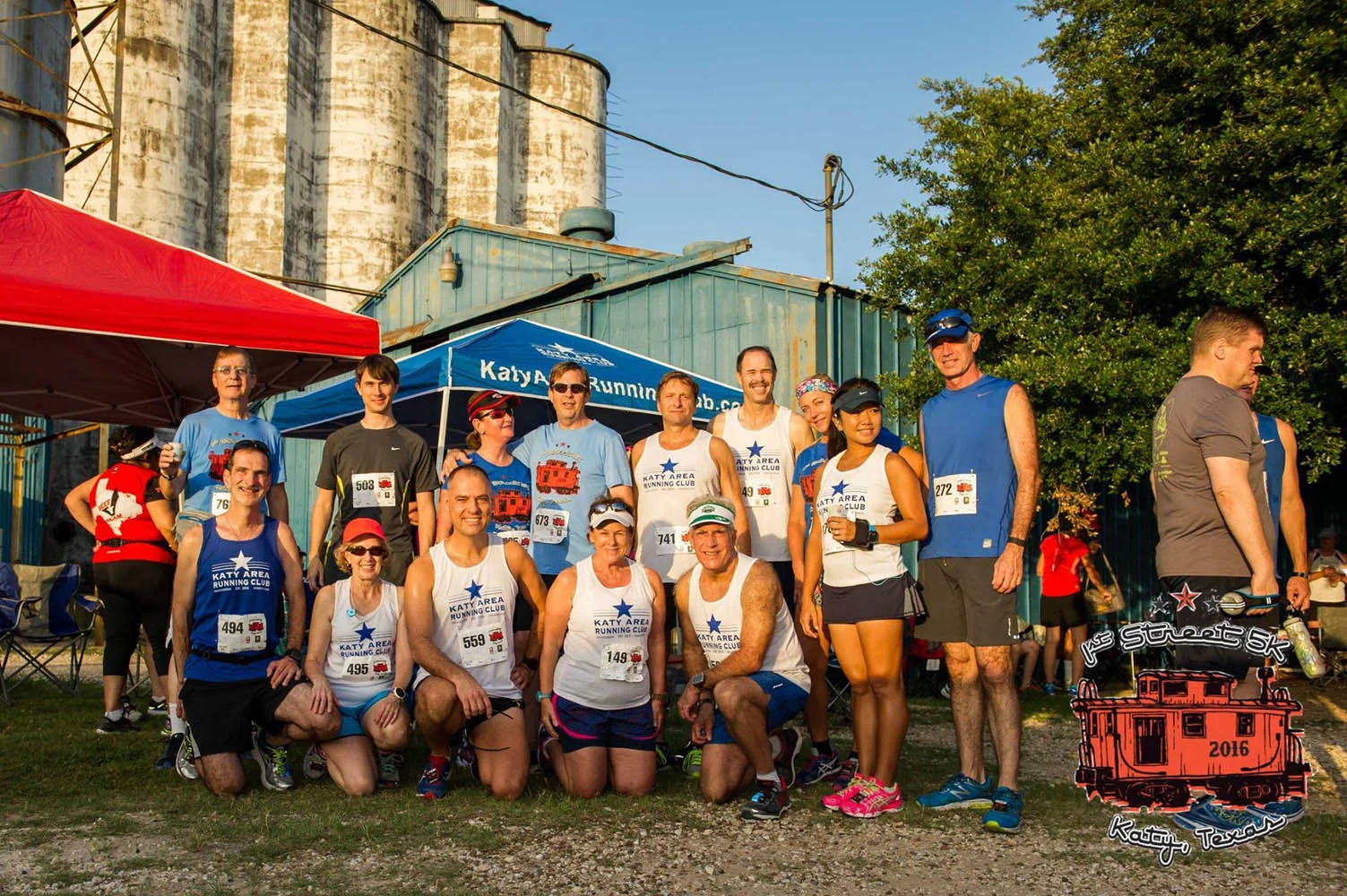KARC Training Plans
For 2024-25 training season, KARC is offering three plans for the
full marathon and three plans for the half marathon.
Both the half and full plans offer three levels:
Level one are basic plans intended for those who are starting from a low level of training or who are seeking to finish the distance for the first time.
Level two plans are for those who have maintained a reasonable base level of running going into the training season and are seeking to accomplish a specific time goal.
Level three plans are for those who are steady runners with a good base of running fitness headed into the training season and are seeking to perform at their best for the race.
If you are interested in a more challenging plan than these, we have some available by request. Please email requests to training@katyarearunningclub.com.
Plan highlights:
Strong emphasis on good consistent mileage over the schedule
No major emphasis on speed work until the last phase of the build
Incorporates a number of local races as tune-ups
Below you will find training plans for the Chevron Full/Aramco Half Marathon. If you have any questions, please contact

Things to Consider
The number 1 most important thing to make sure you have a successful race is:
DON’T GET INJURED
All of us are different. The great thing about running is it brings all of us together. However, that doesn’t mean that our bodies respond the same to training. Listen to your body. Don’t run through persistent pain, don’t push workouts when you know your body needs to heal, and don’t try to make up for lost mileage. It is far better to show up at the start line in January a little undertrained than injured. You should add stretching, core work, dynamic exercises, etc 2-3 times a week to suit your schedule.
The plans are designed to start slow and build slowly. We’re taking advantage of a 24-week build so that mileage doesn’t have to increase rapidly. The plans build in days when you should rest and recover.
Runs and Workouts

Easy Runs
The bulk of our mileage. Conversational pace. Easy means easy. Don’t push it because you feel good – save it for the workouts and for race day!

Recovery Runs
Easier than easy. It is nearly impossible to run these too slow. You should be able to breathe in through your nose here! You should feel refreshed afterwards. Challenge yourself to see how low you can keep your heart rate.

Long Runs
Long runs can be done at your easy pace. The effort to hold this pace will likely increase over the length of your run, especially once they get over 2 hours. For these longer efforts, make sure you are practicing your race day nutrition and hydration. While the end of a 20 miler can feel hard, you shouldn’t be totally destroyed. Save that for race day!

Marathon Pace (MP) Long Runs
These runs are really training your body to run the last miles of the marathon. Start with your normal easy pace, warm up well, and then run your pace for the marathon for the last part of the long run. Practice your race day nutrition and hydration; treat these as marathon simulation. These workouts are hard and combined with the cumulative mileage leading up to them will serve you well. They are physically and mentally taxing.

Tempo Runs
Tempo runs should be done at the pace you can run for approximately 1 hour. For most of us, this will be somewhere between our 10k pace and our 10 mile pace. This is hard running, but it should be smooth and controlled. Many of the tempo workouts in this plan will say 4 x 1 mile. A workout like that may go as follows:
- 2 mile warm up
- Repeat 4 times:
o Run 1 mile at tempo pace
o Jog for 2 minutes
- Cool down 1 mile or to desired mileage
These workouts can be run as 4 straight miles of tempo, which will usually result in a slightly slower pace.
If you can’t sustain the pace for the whole workout, start slower next time.

Speed
Speed work trains our body to improve oxygen utilization. These repeats are done at our 5k race pace and should feel difficult by the end. Ensure you’re fully warmed up before starting them, and plan for recovery jogs of anywhere from 50 to 90 percent of the time it takes you to run the interval. For example, a 28:00 5k runner would go through 800m in about 4 minutes and 30 seconds. The recovery sections should be 2:15 to 4:00. Their workout could look like this: - 2 mile warmup - Repeat 5 times: o Run 800m at 5k pace (or run hard for 4:30) o Recover jog for 3:00 - Cool down 1 mile or to desired mileage For the early speed work in this plan, just follow a minute of hard running with a minute of easy running and repeat as indicated.

Strides
Strides train our body to run with good form, improve our turnover, and allow us to run at a high speed without taxing our aerobic system. These should be done towards the end of an easy run and last no more than 20-30 seconds with full recovery after. A great way to run strides is on the track – run the straightaway hard but controlled, focusing on arm swing, knee lift, good turnover, etc. Afterwards, jog the rest of the track nice and easy.

Changing the plan to meet your schedule
We’ve tried to have this plan suit KARC’s schedule – track on Tuesdays, long runs on Saturdays. If this doesn’t work for you, move the runs around to suit. However, please ensure you watch out for too much training load over a number of days. The rest days here are interspersed to allow you to recover and avoid injury and burnout. Chaining 3 or 4 days of hard running together is counter productive.
Training races
The plan includes the following local races:
- Back 2 School 5k on Monday September 2 – use this to dial in your training paces
- Houston Half on Sunday October 27
- HMSA 25K on November 24
- Turkey Dash on Thursday November 28
These races are a great chance to check in on your fitness, get some practice, and have some fun.
Some final thoughts
- Maybe you have a coach who says that running tempo intervals isn’t as effective as long tempos, or that you don’t need to run 20 milers to do well in the marathon. If you have a coach, listen to your coach! These plans are designed to give a path to marathon improvement and are good for most runners, most of the time. If you have invested in personal coaching, stay the course. These plans are meant to serve as a resource for our club and may not be perfect for you.
- Read Pfitzinger’s Advanced Marathoning. It’s a wealth of information and discussion from someone who not only won the Olympic Trials and represented the US twice, but also trained several athletes over the years. His notes on hydration, nutrition, injury prevention, and racing strategies are great material for anyone who wants to run the ultimate race distance.
